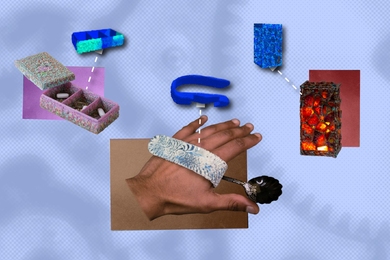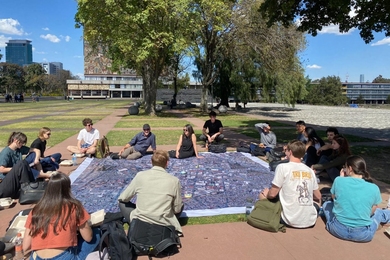MIT scientists and colleagues have successfully operated MIT's experimental nuclear fusion reactor over the Internet from California.
This is the first transcontinental operation of a fusion reactor, a tokamak, an important step because future tokamaks will be national or international facilities. The demonstrations last week, funded by the Department of Energy (DOE), show that scientists could run tokamak experiments from their home labs. This would cut costs such as travel and housing for visiting scientists.
The MIT tokamak in Cambridge, Alcator C-Mod, was operated by MIT scientists from Lawrence Livermore National Laboratory in California over a DOE "subnet" of the global Internet. The Energy Science Network (ESnet) is dedicated to energy research. The scientists ran a few tests over ESnet about three weeks ago, but last Tuesday (March 21) marked the first full day of experiments. Experiments were also conducted on March 22.
Tokamaks are machines that make plasma, an electrically charged gas that can be used to achieve nuclear fusion. "The purpose of our research is to understand the behavior of extremely high-temperature plasmas, with the ultimate goal of making nuclear fusion into a commercial energy source," said Earl Marmar, a senior research scientist in physics and a member of the tokamak team at MIT's Plasma Fusion Center (PFC).
In the experiments conducted over the Internet, the scientists used the reactor to create plasma in one-second bursts every 15 minutes. Each experiment involved a physics operator (the person who chooses the parameters of each plasma "shot") and a session leader (the scientist in charge of the experiment).
For the Internet experiments, both scientists were based in California. Brian LaBombard was the session leader and Stephen Horne was the physics operator (Drs. LaBombard and Horne are experimental research scientists at the PFC). They were able to communicate with their Cambridge-based colleagues via live audio and video over the Internet.
Dr. Marmar noted, however, that the engineering systems that ensure the safety of the tokamak are still operated locally at MIT. "The engineering systems can't be done remotely, and we wouldn't want them to be done remotely," he said. "The engineers at MIT have ultimate control to ensure that everything's operated safely." For example, local operators assure that currents aren't too high, which could damage the tokamak's magnets.
MIT's Alcator C-Mod is one of three major tokamak test reactors in the United States (the others are at Princeton and in San Diego). Future national or international facilities include the Tokamak Physics Experiment (TPX) that will be sited at Princeton, and the International Thermonuclear Experimental Reactor (ITER) that is being designed as a collaboration among the US, Europe, Japan and Russia for a site yet to be determined.
The current tests over the Internet are demonstrating the technical feasibility of running a tokamak remotely. But equally important, they are also allowing the scientists to learn more about how to manage groups of people who are not in the same place. "We're kind of dipping our toes into both technical and collaboration issues," said Martin Greenwald, a PFC principal research scientist and head of the PFC's Office of Computer Services.
Other MIT scientists involved in the experiment are systems programmer Josh Stillerman and principal research scientist Yuichi Takase at Livermore, and systems programmer Ian Fredian at MIT. Lawrence Livermore scientists who were involved include Tom Casper, Jeff Moller, Bill Meyer and Gary Porter. Additional collaborators were from the University of Maryland and Johns Hopkins University.
Professor Ian Hutchinson of the Department of Nuclear Engineering is head of the Alcator C-Mod division.
A version of this article appeared in MIT Tech Talk on April 5, 1995.





